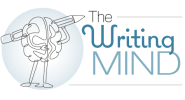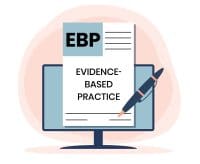Proteins frequently are called the building blocks of life, and paragraphs the building blocks of an article. Thoughtfully crafted paragraphs keep readers’ attention as they navigate through text. Here are some tips for structuring an effective paragraph.
Design with a purpose
The AMA Manual of Style notes that a paragraph is a cohesive group of sentences that presents a thought or several related thoughts. Each paragraph should be clear and focused on its own but also fit into the overall purpose of the article. Long and Beck use the analogy of a well-designed, well-equipped kitchen: “There’s a place for everything, and everything is in its place. It’s an efficient place to work, without clutter.”
The design begins with a topic sentence. This sentence, which usually (but not always) comes first in the paragraph, signals the reader that a new thought is coming. It conveys the point of the paragraph.
Consider this paragraph from an article on health misinformation:
“A difference exists between misinformation and disinformation. Misinformation is false, inaccurate, or misleading information. Disinformation is a deliberate intent to deceive for political, personal, and monetary gain. Health misinformation has a long history. A well-known example is an 1802 cartoon depicting people turning into cows after receiving smallpox inoculations. In America, the term ‘snake oil’ refers to ineffective and even poisonous ‘medications’ popularized by traveling salespeople and newspaper advertising.”
Note that the topic sentence (A difference exists between misinformation and disinformation.) is followed by two sentences that explain the difference. Because the article is focused on misinformation and not disinformation, the additional sentences related to disinformation are likely to be helpful to readers.
Build in transitions
Transitions make it easier for readers to follow your train of thought. The choice of transition depends on the purpose:
| Purpose | Examples |
| To add to an idea | Furthermore, in addition, moreover, another |
| To show sequence or enumerate a few points related to the topic | First, second, third |
| To illustrate a point | For example, for instance |
| To contrast | In contrast, on the other hand, nonetheless, rather, conversely |
| To compare | By comparison, compared to, compared with |
| To show similarity | Similarly, likewise, in the same way |
| To convey reason or cause and effect | Because, consequently, for that reason, as a result, therefore, thus |
| To conclude | Finally, in conclusion, in summary |
Here is an example:
Hemostasis comprises three steps. First, vascular spasm occurs; second, the platelet plug forms; and third, coagulation begins. (The italicized words provide an easy way for the reader to follow the sequence of events.)
Another transitional tool is the conjunction. Conjunctions (if, and, but, yet, so) connect words, phrases (series of words without both a subject and verb), and sentences (have both a subject and verb). For example: “Novice operating room nurses completed simulation training on Monday and Tuesday, and worked with preceptors the rest of the week.”
Consider the paragraph below from an article on neonatal abstinence syndrome (NAS). Note that all of the text in the paragraph relates to the clinical signs that are mentioned in the first sentence. “For example” and “However” (italicized) are examples of transitions.
“Clinical signs vary for each infant and are based on several factors, including the type and amount of drug exposure, the time of last maternal drug use, and the drug’s half-life. For example, signs of NAS from in utero heroin exposure typically begin within 24 hours of birth, while signs of withdrawal from methadone usually begin between 24 to 72 hours after birth and in some cases may not manifest until 5 to 7 days after. The length and extent of withdrawal signs vary. An infant exposed to a drug with a shorter half-life (for example, hydrocodone, which has an average half-life of 4 hours) may be safely discharged if no withdrawal signs occur by 3 days after birth. However, an infant exposed to a drug with a prolonged half-life (for example, methadone, which has a half-life of 19 to 41 hours) should be observed for at least 5 to 7 days. The lasting effect of drug exposure on signs of withdrawal is unknown. A study by Patrick and colleagues indicates that infants exposed to drugs with prolonged half-lives may have NAS signs for 4 to 6 months.”
Respect the reader’s time
Readers’ time is limited, so you want to make it as easy as possible for them to comprehend your material. Paragraphs provide a tool for accomplishing that goal by providing a visual respite for the reader’s eyes and breaking up content into more manageable chunks. Imagine trying to read a solid page of text; it’s unlikely you would glean much benefit.
There are no hard and fast rules for paragraph length, but if it’s longer than five or six sentences or more than 200 words, it may be harder to keep the reader’s attention. You also don’t want to have all short or all long paragraphs; some variation is helpful. Another consideration is how the article will be accessed: It’s harder to read longer paragraphs on a cell phone than in print.
What’s more important than length, however, is content, especially unity of thought. Every sentence needs to relate to the topic sentence. To keep focused, avoid extraneous words and overuse of abbreviations.
Extraneous words clutter paragraphs, making it harder for readers to grasp key points. Pruning these words strengthens your writing. For instance, instead of “It is important to remember…”, use “Remember…” After all, if it wasn’t important, you wouldn’t be telling readers to remember it. Here are a few more examples:
- “Most” instead of “a majority of”
- “To” instead of “in order to”
- “Because” instead of “due to the fact that”
- “Few” instead of “a small number of.”
Abbreviations can shorten text, but also can potentially confuse readers and be ambiguous. For example, CRF can refer to case report form, chronic renal failure, chronic respiratory failure, or corticotropin-releasing factor. If the abbreviation is defined early in the article and not used until much later, the reader may forget what it stands for. Reserve abbreviations for situations where they can replace a longer phrase that will be used frequently in the article.
After you’ve written your topic sentence and supporting sentences (including transitions), you’re ready to conclude your paragraph so you can move to the next.
Finish with a flourish
Good paragraphs end with a sentence that summarizes what has come before, makes a key point, or serves as a transition to the next paragraph. For example, “Reserve abbreviations for situations when they can replace a longer phrase that will be used frequently in the article.” provides a concluding key point about the use of abbreviations.
A powerful tool
An effective article consists of effective paragraph. By designing your paragraphs carefully, keeping on point, using transitions, and finishing with a flourish, you can wield paragraph power and capture readers’ attention.
References
JAMA Network Editors. AMA Manual of Style. 11th ed. New York City, NY: Oxford University Press; 2020.
Saver C. Writing skills lab. In: Saver C. Anatomy of Writing for Publication for Nurses. 4th ed. Indianapolis, IN: Sigma Theta Tau International; 2021; 81-91.
Schierholz E, French R, Boucher A-M. Caring for infants and families affected by neonatal abstinence syndrome. Am Nurs J. 2020;15(1):6-12.
Long TL, Beck CT. Writing in Nursing: A Brief Guide. New York City, NY: Oxford University Press; 2017.
Villarruel AM, James R. Preventing the spread of misinformation. Am Nurs J. 2022;17(2):22-6.
 Hi, I’m Cynthia Saver, MS, RN, president of CLS Development, Inc., which provides writing and editing services, and editor of Anatomy of Writing for Publication for Nurses, 4th ed. I’m also past editorial director for American Nurse Journal.
Hi, I’m Cynthia Saver, MS, RN, president of CLS Development, Inc., which provides writing and editing services, and editor of Anatomy of Writing for Publication for Nurses, 4th ed. I’m also past editorial director for American Nurse Journal.
I’ve been a full-time professional nurse writer and editor for many years, and that doesn’t count the writing I did as I fulfilled my nursing roles in clinical, research, education, and management. My passion is helping nurses share their expertise through the written word, including, but not limited to, publication. Writing can be scary and intimidating. I hope to make it less so and to help you develop your writing skills the same way you’ve developed your nursing skills.
Whether you’re considering your first or your 50th publication, want to contribute to your organization’s newsletter, or crave to be a better communicator online and in print, I hope you’ll find what I write helpful. The nurse publishing colleagues I’ve learned from over the years (many of whom are contributors to my book) may not be listed by name, but I’m grateful for their willingness to share. In that spirit, I’m looking forward to sharing with you! If you have feedback, feel free to email me at csaver57@gmail.com.



















